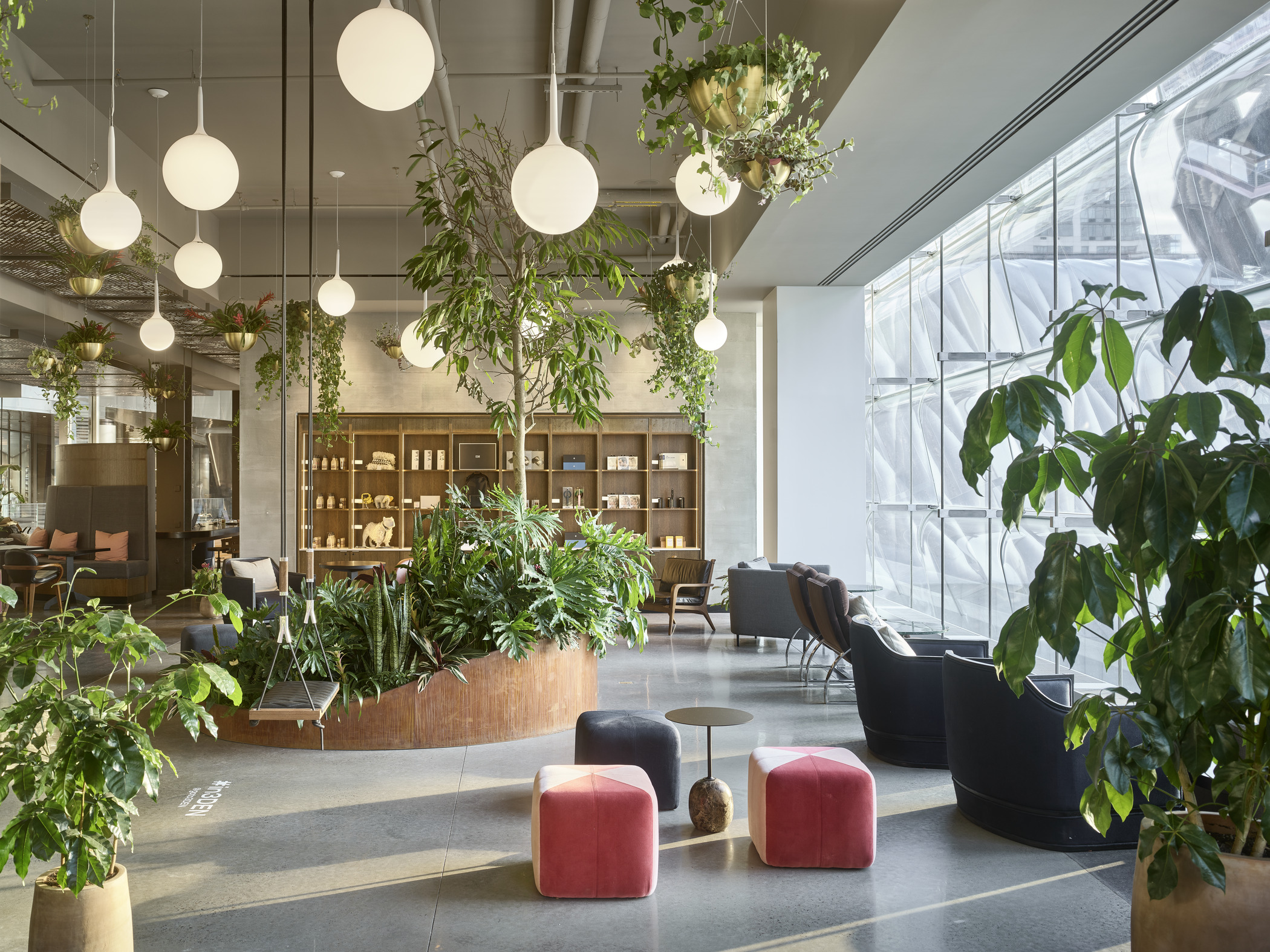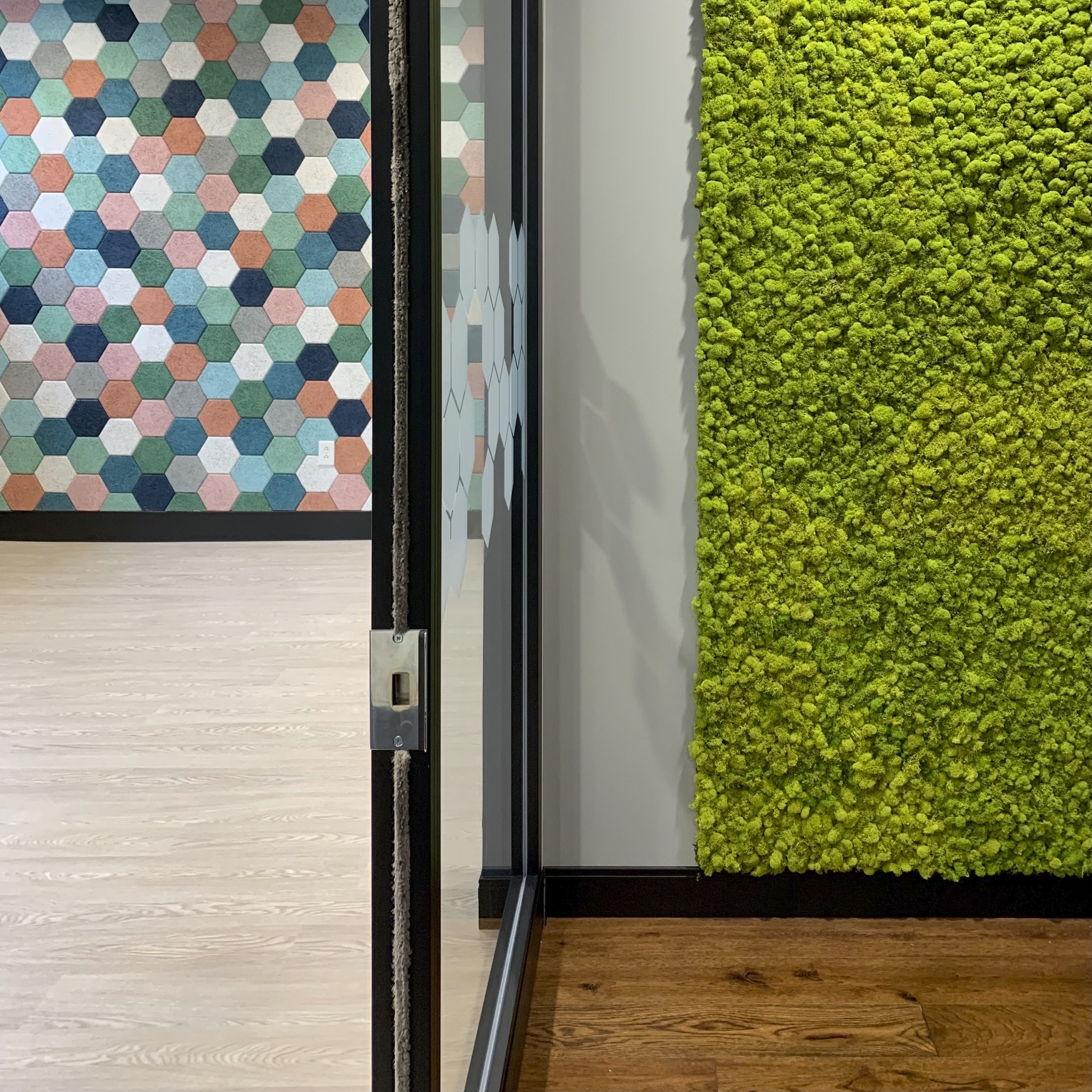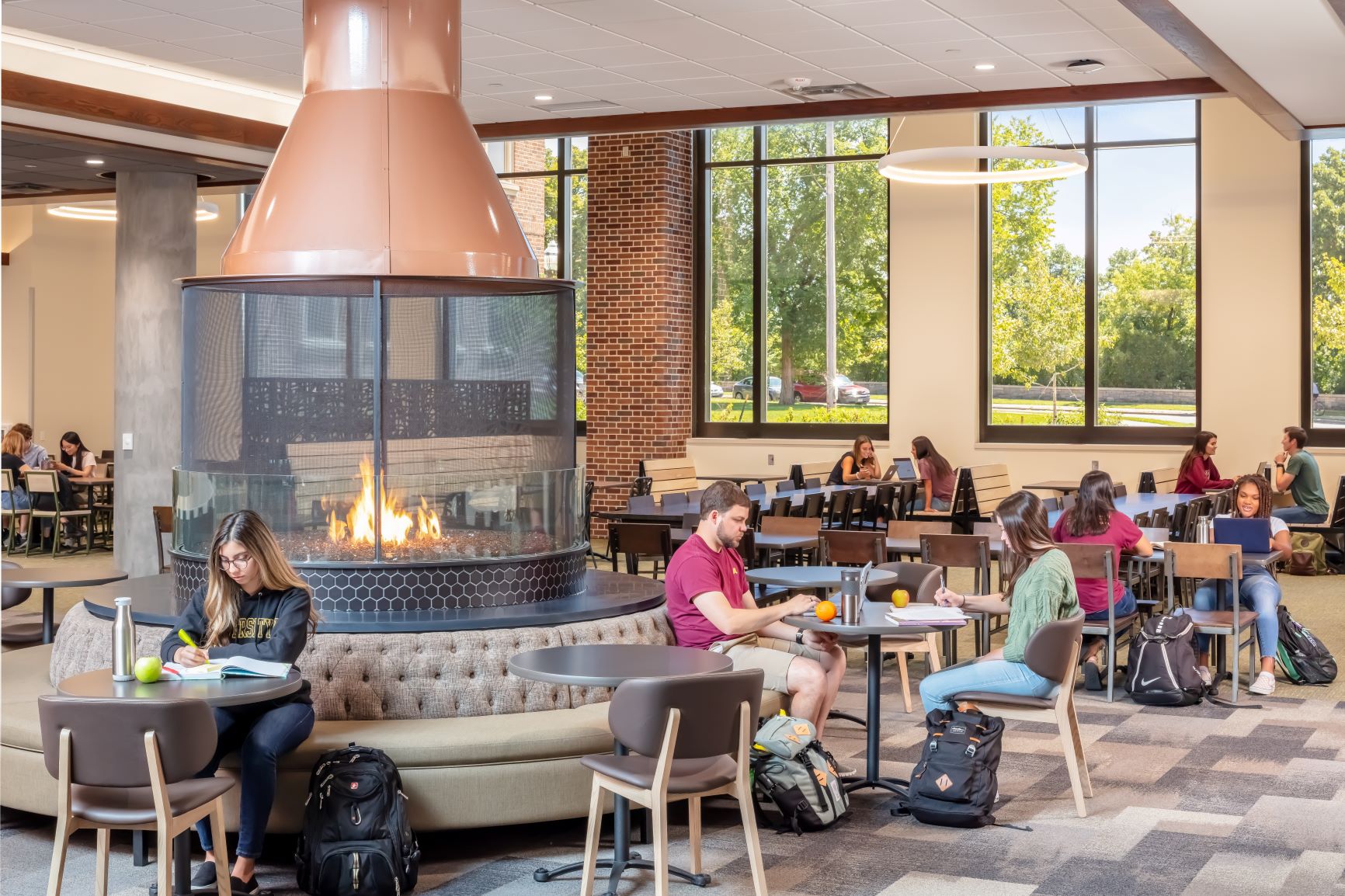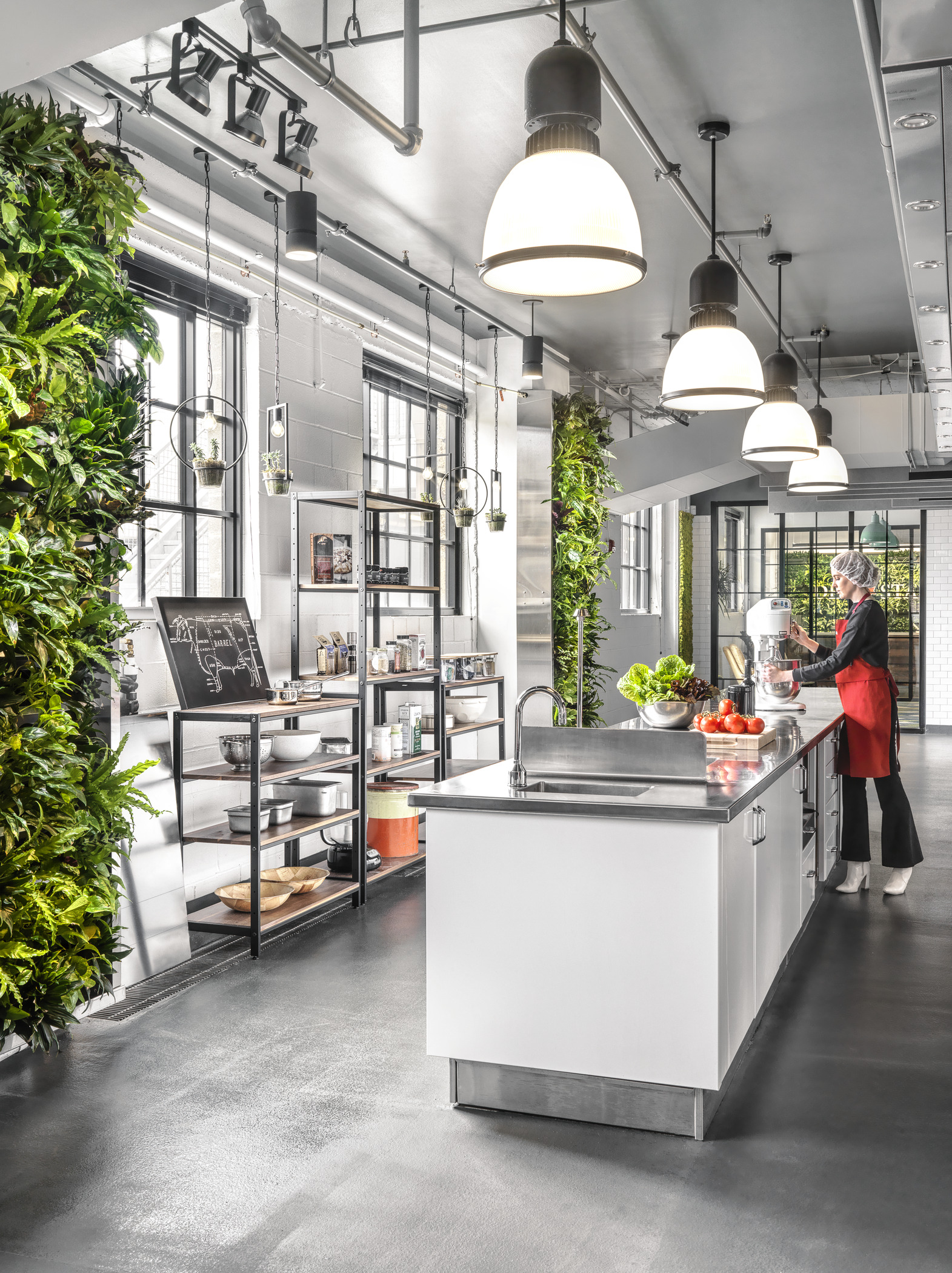American architect, writer and educator Frank Lloyd Wright famously said, “Study nature, love nature, stay close to nature, it will never fail you.” Incorporating natural elements and designing around natural landscapes became the inspiration behind many of Wright’s iconic home designs of the early to mid-1900s. Today, biophilic design – the practice of reconnecting people and nature within the built environment – is alive and well in higher education spaces, and for good reason.
“Wright was right. Nature never fails to inspire us. People have a natural instinct to want to connect with nature. In a modern world where students spend much of their time indoors in manufactured environments, incorporating elements of nature within the spaces they frequent can have a positive impact on their overall physical and mental well-being,” said Paul Wuennenberg, firm Principal and higher education design expert.
Biophilic elements can be incorporated in higher education designs in a number of ways; many of which involve the use of greenery, fire, natural light and textures to appease the occupants’ senses and promote such mental and physical benefits as decreased anxiety, lower blood pressure, fewer illness symptoms, increased social interaction, improved coping skills and enhanced attention span, among others.

This space blurs the lines of biophilic and “conventional” design through the use of planters, organic shapes, and naturalistic textures in a conventionally “modern” environment.
Incorporating vegetation in a design can be one of the easiest ways to bring the natural environment indoors. Some of the more popular forms of “plantscaping” include living plant walls and the use of hanging baskets and decorative planters filled with greenery. Plants have been proven to improve overall physical health and impart a sense of relaxation.
An alternative to using live plants, preserved moss walls are a less costly option to integrate biophilic elements that require little to no maintenance compared to living walls. These moss walls can integrate signage and patterns and are usually created from sheet moss, pole moss or reindeer moss. Reindeer moss can even have atypical color options like blues and purples that tie into the aesthetic of the environment. Living plant and moss walls are more visible and accessible than ever becoming staples in higher education design.

An example of a preserved moss wall, which provides a stark and appealing contrast to more conventional forms of decor in this space.
While fire does have limited uses indoors, incorporating fireplaces in dining and lounging areas where students often gather can add an appeasing element of warmth, color and movement to the space and make students feel cozy and secure. When the historic Pioneer residence hall at the University of Minnesota was renovated in 2019, our designs featured multiple fireplaces, including a cylindrical, glass-surround fireplace with seating in the dining hall.

Pioneer Hall’s open fireplace accentuates the inviting atmosphere of its common space, implementing biophilic design through flame elements.
Indirectly, students may also experience the benefits of nature within their environments through the use of nature images and colors such as earth tones, blues and greens; materials such as cork, wood and bamboo; and shapes that evoke the feeling of being outdoors. At the University of Colorado-Boulder, we designed the Williams Village East residence hall with wayfinding graphics that feature photography of local Boulder nature destinations which are also mapped out on a full-scale wall map in the hall’s first-floor game room.
“The incorporation of biophilic elements as simple as images or artwork of natural elements can contribute to a healthier environment for occupants and is a precondition for WELL Certification of a space. The patterns of nature incorporated into a space through textures like stone cladding, wood veneer or even a subtle space plan layout with a biophilic nod can incorporate the living world,” said Associate Principal and Interior Designer Lisa Morrison.

While the biophilic accents in this test kitchen are only a small component of the room’s design, their implementation leaves a major impact that showcases the appeal of biophilic elements.
Incorporating natural light in a design can also have a huge impact on a student’s overall mood and well-being. Large windows with sweeping views of outdoor foliage and the use of skylights, glass and atriums create natural shadows and light movement throughout the day to stimulate students’ senses while allowing them to observe changing weather patterns directly.
In spaces where artificial lighting is necessary, incorporating circadian lighting that supports a person’s circadian rhythm and psychological health is a good option. Circadian lighting supports biophilic design as it mimics light cycles that occur in nature and helps to reset students’ internal clocks.
Incorporating biophilic elements in higher education design can lead to happier, healthier students, and ultimately better outcomes for their time spent on campus.
